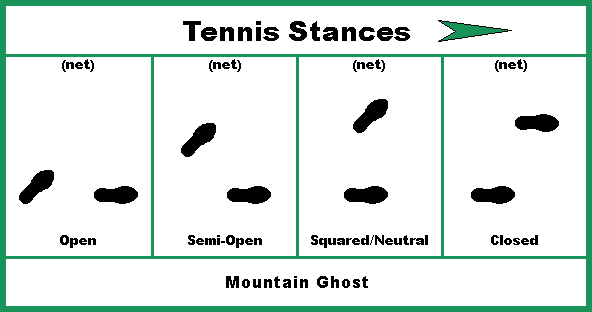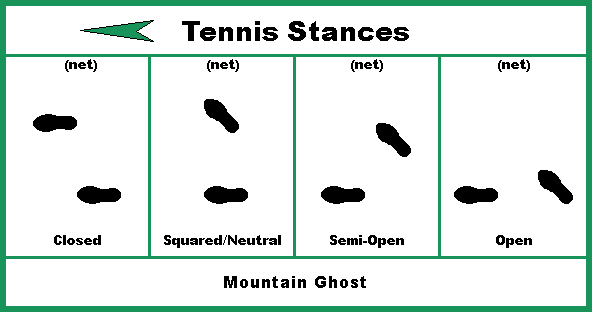For groundstrokes, the upper body (torso/shoulders) should normally turn at least 90 degrees away from the net, sometimes more, to prepare for either FH or BH strokes. For both FH & BH strokes, the back of the front shoulder will often be presented to the net -- this is an indication that the shoulders have turned a bit more than 90 degrees. When setting up for run-around shots (inside-out shots), the body will rotate noticeably more than 90 degrees to set up for the shot.
The orientation of the lower body (feet/legs/hips) will depend on the type of stroke and the type of stance employed. For FH g'strokes, the stance will usually be neutral (even/square), semi-open, or (fully) open.
Closed stances, especially extreme closed stances, should normally be avoided on the FH side. This stance will not allow the hips to rotate freely back toward the net unless the back leg kicks around to open up the hips on the forward swing of the racket -- this often requires 2 extra steps to recover to prepare for the stroke.
Make sure that you master the neutral stance, not a closed one, for the FH so that you become accustomed to turning your body completely to the side. After that, then work on the semi-open and then the fully open stances -- make sure that your upper body rotates sufficiently away from the net on your unit turn.
Which BH stroke are you using, the 1-hander or the 2-hander?
For sake of clarity, let's use a sideline and the baseline as references. For the FH, place your right foot where a sideline intersects with the the baseline. If you take a step forward, toward the net, so that your left foot is pretty much on the same side line, you have a neutral (square) stance.
If the left foot steps significantly across that sideline, you have a closed stance. In the case where the left foot does not step in and stays near the baseline, an fully open stance is the result. When the left foot is closer to the net than the right. but is positioned somewhere between the baseline & the sideline, you have a semi-open stance.


